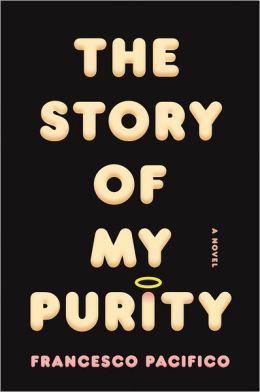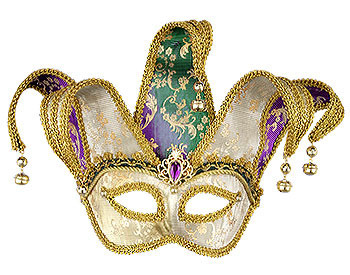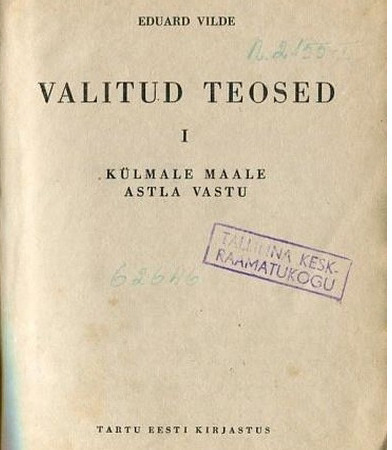The Paris Review's Blog, page 840
March 13, 2013
Happy Birthday, Jack Kerouac
“I spent my entire youth writing slowly with revisions and endless rehashing speculation and deleting and got so I was writing one sentence a day and the sentence had no FEELING. Goddamn it, FEELING is what I like in art, not CRAFTINESS and the hiding of feelings.” —Jack Kerouac, The Art of Fiction No. 41
Festival Guide: A List of Don’ts for the Lady Music Writer
Image via jennwinter.com.
Don’t be fun. “Fun” is your former life. Now you are expected to responsibly imbibe all of the complimentary beverages available to you over the course of the ten hours (per day) you are attending live sets (even if they are stone boring), factoring in an extra two to three hours set aside for the after- and after-after-parties. If you insist on remaining fun, you should be sober, like, one-beer sober or recovering-alcoholic sober. And if you’re sober and not semifamous, be aware there is a forty percent chance that band people will be less inclined to chat with you. It’s all right; they’re going to give the hastiest interview possible. It’s a festival.
Don’t be a music journalist when you’re broke, even if it’s the primary way you earn income from your writing. Among other reasons, if you’re broke, you’ll drink the free alcohol. Too much of it, probably. Read More »
The Sixty-Nine-Years-Overdue Library Book, and Other News
“An Estonian man has returned a library book sixty-nine years late, partly blaming a World War II aerial bombing that damaged the library for the late return.” They bought this excuse; no fine was levied.
“Maurice, aged seven, drew the illustrations for ‘They Were Inseparable,’ and his brother Jack, who was twelve, composed the text. The book was dedicated to their sixteen-year-old sister with whom they were both infatuated.” Avi Steinberg on the Sendak family.
Is this the best palindrome of the year? (Were there others?)
The Bloomsbury guide to surviving London disasters.
The nominees for the Women’s Prize for Fiction (née Orange Prize) have been announced.
March 12, 2013
Underwear Life: An Interview with Francesco Pacifico
 Francesco Pacifico’s novel The Story of My Purity is narrated by Piero Rosini. This Piero seems like most other modern schlubs—thirty, overweight, bourgeois, in a sexless marriage, you know it—but the thing that makes him unusual is his deep belief in Christ. This is the most Catholic narrator in contemporary literature. He is also the funniest Catholic narrator in contemporary literature. And what happens to Piero is some kind of picaresque adventure that takes him from Rome to Paris and beyond, into all the problems of his innocence. What else do you need to know about Piero’s creator? Francesco Pacifico is also a translator from English into Italian, and translation is something we talk about a lot. In fact, he has almost definitely read more fiction in English than you have. And if an inglese italianato is the devil incarnate, then what does that make an italiano americano? I just mean that Francesco Pacifico is one of the least innocent novelists I know.
Francesco Pacifico’s novel The Story of My Purity is narrated by Piero Rosini. This Piero seems like most other modern schlubs—thirty, overweight, bourgeois, in a sexless marriage, you know it—but the thing that makes him unusual is his deep belief in Christ. This is the most Catholic narrator in contemporary literature. He is also the funniest Catholic narrator in contemporary literature. And what happens to Piero is some kind of picaresque adventure that takes him from Rome to Paris and beyond, into all the problems of his innocence. What else do you need to know about Piero’s creator? Francesco Pacifico is also a translator from English into Italian, and translation is something we talk about a lot. In fact, he has almost definitely read more fiction in English than you have. And if an inglese italianato is the devil incarnate, then what does that make an italiano americano? I just mean that Francesco Pacifico is one of the least innocent novelists I know.
There’s a moment where Piero says “nobody’s Roman,” and this setting of Rome is crucial to the book’s opening. So my first question is, are you Roman?
I am, and I’m not. I was born in Rome and have lived there all my life. But I don’t know how to cook trippa and pajata, I know nothing of Rome’s cuisine pauvre, my family’s half-assed culinary traditions are half abbruzzese and half everything. My father’s side comes from L’Aquila, Abbruzzio, where my granddad’s family was big during the Fascist era, or so I’m told. My mother’s side is from everywhere, the hills of Sabina, and remotely Spain and France, and they travelled the country as my granddad was an engineer for the electric company—Milan, Genoa, Terni. I don’t feel Roman. You can spot a real Roman from miles. Savvy, gritty, ironic. I’m not.
And now—to keep with first things first—could you talk a little about this theme of purity? It seems such a gorgeously perverse subject for a contemporary novel. What’s the beauty of purity?
I experimented with not having sex for years. And I am a renowned lover of women. There was a time in my midtwenties where I thought of my life as an ongoing piece of performance art, and I realized the big thing I should try was to stop having sex. I had this romantic view of my love for my girlfriend being exalted and enhanced by abstinence. I became impotent. Read More »
Street Haunting with Jean Rhys
Illustration credit Joanna Walsh.
The author Jean Rhys had trouble finishing her stories. Rhys told her editor and friend Diana Athill that “ending a novel based on things that had really happened ... was difficult because a novel must have shape, and real life usually has none.” In Rhys’s later years, spent struggling with her autobiography and idly drinking in her Devonshire bungalow, her memory was faulty. The problem wasn’t just that she couldn’t remember; Rhys told Athill that she sometimes felt “more like a pen being used than like a person using a pen,” a startling insight that perhaps led Athill to write, in the foreword to Rhys’s unfinished autobiography, Smile Please, published posthumously in 1979, that her friend had “used up” her life in fiction.
Wide Sargasso Sea (1967) was Rhys’s final book, the one that made her famous late—“too late,” she said. Set in the early nineteenth century, Wide Sargasso Sea was Rhys’s great historical vendetta, in which she furnished a life for the West Indian “madwoman” Charlotte Brontë dismissed to Rochester’s attic in Jane Eyre. I began where Rhys ended, reading her last novel at sixteen in an English class at Hills Road Sixth Form College in Cambridge, England, a few doors away from the Perse School for Girls, the posh private school Rhys had attended on moving to England from Dominica in 1907. Jean and I went to school on the same street a hundred years apart, sixteen-year-old sisters in the same place at a different time. Cambridge had changed, but Jean stayed with me. Neither of us liked school, and we both knew what it was like to be derided by a Perse girl; Jean for her Creole accent, and I for being a Hills Road student (in keeping with informal tradition, our schools maintain an absurd rivalry). Read More »
The Underground Library
Checking out books on the subway? We can dig it! (And those bookshelf mock-ups would make a pleasant change from Dr. Zizmor ads—not that we don’t love him, too.)
Book Blasphemy, and Other News
Books carved with surgical tools.
Related: “I’m sure what I did was completely blasphemous, but y’all ... it turned out really cool.” Wallpapering with Faulkner. (His pages, not him.)
How many copies need to move to qualify a book as an Amazon bestseller? PW does the math and finds: not that many.
Speaking of inflation! In the UK, the sinister-sounding “inflation basket” indicates that people are buying more e-books, less champagne.
“These are fundamentally probing, even discomfiting, books.” Meghan O’Rourke pays tribute to Renata Adler.
March 11, 2013
Borrowed Time
“You own every book,” my boyfriend often says to me. And sometimes it seems like that’s true. I now own enough unread books to last me at least ten years, and I keep adding to the collection every day.
Books are meant to be read. This is what I say to myself whenever I, with some level of despair, glance at my many bookshelves. My personal library takes up a substantial amount of room in the Brooklyn apartment I share with two friends. I’ve read a lot of books that I own. I’ve also, truth be told, not read a good number of the books. I feel tremendous guilt towards the books I ignore.
It’s no surprise, then, that Meriç Algün Ringborg’s “The Library of Unborrowed Books” exhibition at Art in General, in Manhattan, should catch my eye. I was intrigued by the concept: the artist had selected over a thousand titles from the Center for Fiction’s library that have never been borrowed. Read More »
Letter from Boston
Smoky circles formed outside the Hynes Convention Center, the Association of Writers & Writing Programs Conference and Bookfair’s central hub. The snow was light but constant. There was a consistently surprising disparity between what filled the sky and what accumulated on the ground. Cheap sunglasses doubled as ski goggles. A man in an orange wool hat aggressively bummed a cigarette while smoking a cigarette.
Across the street, in the shadow of John Mayer’s alma mater, a row of Back Bay sports bars pumped deep cuts off the American Pie 2 sound track. Inside one of them a man with pink cheeks argued with his friend over Ben Affleck’s filmography. He proclaimed Pearl Harbor to be Affleck’s best movie, then ordered another Ketel and Sprite.
Further down the bar, burlier regulars passed their snow-day or no-show shifts warily eyeing the influx of eyeglasses. One ate waffle fries with a fork. I remained neutral, drinking hard cider and picking at a dry turkey sandwich. Below us a panel talk on criticism was slowly convening in the basement. After filing the mustard from under my nails I descended the wet stairs and made a beeline for the couch, reserving a cushion with a makeshift hat-and-jacket scarecrow while I scrounged for more cider. Read More »
Seven Sensational Party Spaces
 The night before Sydney’s world-famous Mardi Gras parade (“I think it is the largest gay parade in the world,” a young German woman would shout behind me at the actual event, as if her sequined cowboy hat didn’t explain it all), I’m in a three-level bar in Darlinghurst. Which, as the name suggests, is an absolute darling of a hurst. It’s also where the gay people who want to live in the gayest part of Sydney live.
The night before Sydney’s world-famous Mardi Gras parade (“I think it is the largest gay parade in the world,” a young German woman would shout behind me at the actual event, as if her sequined cowboy hat didn’t explain it all), I’m in a three-level bar in Darlinghurst. Which, as the name suggests, is an absolute darling of a hurst. It’s also where the gay people who want to live in the gayest part of Sydney live.
I’m a few hours off the airplane. I’m having a good time. But the crowd, even squeezed in shoulder-to-shoulder, comes off a little chilly. By the time I’ve had a couple drinks and the Justin Bieber song “Beauty and a Beat” comes on—which, to my surprise, and delight, sends at least several of the hundred or so men around me into a celebratory sing-along—it dawns on me how out of place I may actually appear. The men, though they surely must have flocked here from all corners for Mardi Gras, are clean-cut to a personne, reeking of meal replacement powder and Romanian deadlifts. Meanwhile I’m sporting a beard born of two months’ neglect, a pair of sneakers that I may as well have grabbed from the top of the nearest Sri Lankan landfill judging from the looks they’re getting, and whichever of my sad ensembles of neutral rags wasn’t crying out for a beautiful laundrette at the dressing hour. I look like a suburban dad who stopped shaving after an unexpected lay-off and wandered out of his house in the middle of a nervous breakdown.
In any case, it seems to be putting people off. The whole night I move from one floor to another, trying to cruise to music that sounds like it was produced inside of a crystal meth molecule, trying to decide which floor is right for me when clearly none of the floors are right for me. Not one to dwell, being thirty now and basically on a high-speed honeymoon with myself, I set my discomfort aside and get to dancing up on that third floor. Just as I’m getting into a splendid imitation of a gay man having fun in a club, some young thing wearing a T-shirt with more graphic design information on it than I can process tugs at my beard with both hands and screams, “Is this real?”
A question for the ages, barely heard over Ke$ha’s “Die Young” played at tinnitus-inducing volume. Read More »
The Paris Review's Blog
- The Paris Review's profile
- 305 followers









